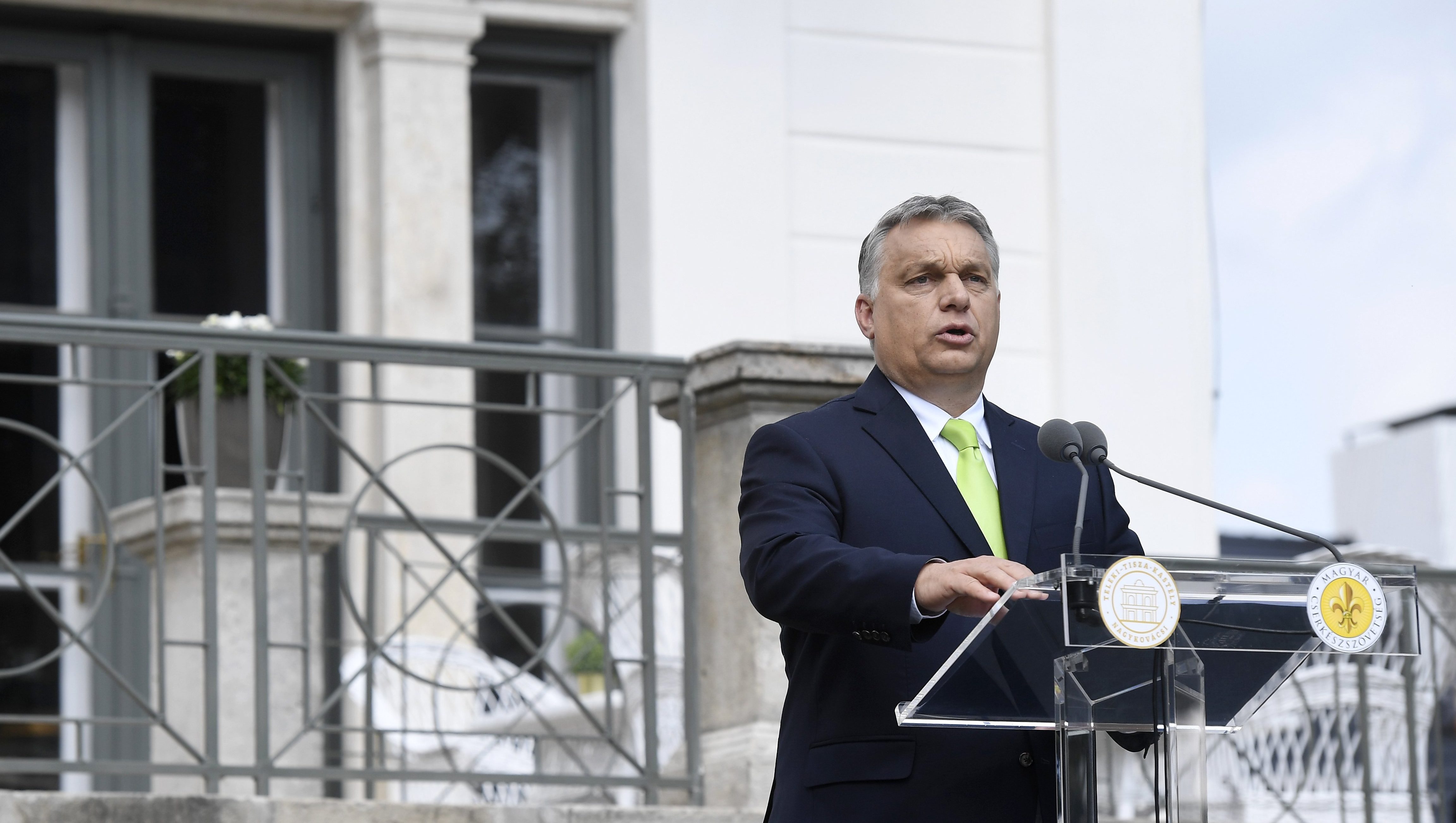
The tradition, the world view and way of thinking which the Hungarian Scout Association and the Hungarian government profess stem from the same roots, the Prime Minister said in the hope that in the future they may be allies in furthering good causes.
A joint goal of the government and the association is to raise young people who believe in the values that have helped the Hungarian people to survive for a thousand years, “even against the odds”.
“For us it is natural to think in terms of country, family and a comradely alliance in which each stands up for the other. We believe in the unity of the Hungarian people across borders”, he highlighted, adding that „We hold that the nation is not some contrivance, but a living community”.

The Prime Minister stressed at the same time that “unless we take action, modern times and new trends may continually undermine the cultural foundations which make the Scouts the Scouts, and Hungary a Hungarian country”. “Therefore today we need soundly erected tents which are capable of withstanding the most powerful storms”, he said.
This scout centre is “not only a storm-proof tent”, but could even become one of the power centres of 21st century Christian democracy which guarantees man’s dignity, freedom and security, protects the equality of men and women and the traditional family model, defends our Christian culture, and gives “our nation a chance also in the 21st century to survive and to thrive”, he said in the park of the Teleki-Tisza Castle which, together with the building, was given to the Hungarian Scout Association in 2013. The Prime Minister referred to the Hungarian Scout Association as Hungary’s most significant youth organisation, and added that the building is not a gift, but an opportunity for the Hungarian Scout Association to reach its full potential, to build communities, and for Hungarian scouting to reach the same high level that once characterised it between the two World Wars.
While communist dictatorship forced scouts into emigration, prison, exclusion and dispersion, after the fall of communism “the many small streams merged into a single abundant river”, said Mr Orbán who addressed the attending scouts at the end of his speech. He said there is a good chance that this building will be not only the property, but also the home of the Hungarian Scout Association. Therefore he invited scouts to “grasp by the tail the opportunity which an exceptional moment of grace in the history of Hungary has given you”.

József Pótor, Nationwide Managing President of the Hungarian Scout Association said we need young people today in the ranks of scouts who are able to cooperate, who identify problems and are able to solve them swiftly, and who do not work for themselves, but for others.
This is the modern youth movement which the country needs, he said about the scout movement.
After the speeches church dignitaries blessed the refurbished building.
The castle was built around 1840 in the classicist style. It was first the property of the Wattay Family, while ownership of the castle later passed to the Teleki Family and then to the Tisza Family. Former transport minister Lajos Tisza – royal commissioner of the reconstruction of the City of Szeged after the 1879 flood – had the castle rebuilt in the 1880s on the basis of the plans of József Benedicty. This was when the Tisza Family’s coat of arms was placed on the façade of the building. After World War II the castle was nationalised, and from 1958 it functioned as a forest children’s home.
In 2013 the castle and its park were donated to the Hungarian Scout Association, and the government provided a grant of HUF 2.5 billion for refurbishment purposes. The scout association created an event centre on the property where they will hold training programmes, international conferences and scout meetings. With the refurbishment project they wanted the building to regain its old “historical splendour”, the information material sent by organisers to the Hungarian news agency MTI reads.
